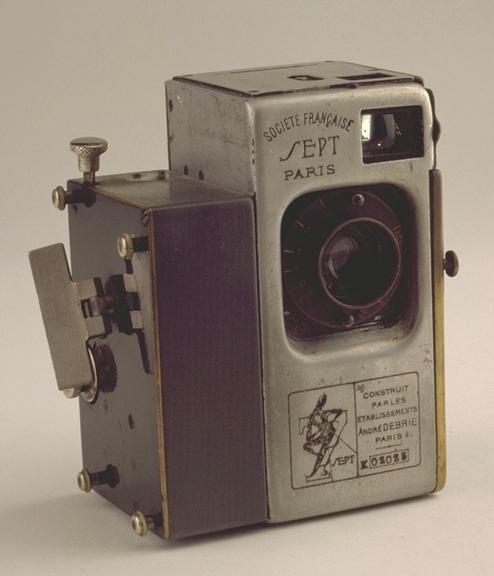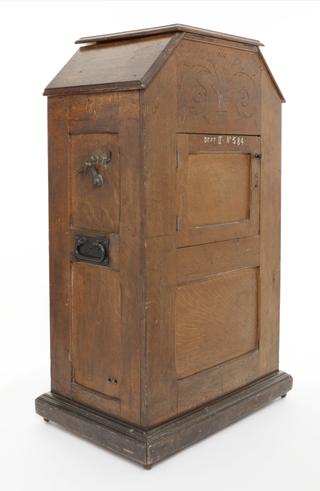Debrie Sept cine camera. Cine camera for 35mm film in 10' chargers, serial number 02025. Fitted with a Zeiss Tessar F: 5cm lens f/3.5-32, Serial No 130206, by E Kraus of Paris. Focusing is done through helical threaded mount. With intermittent sprocket transport and provision for single exposures. Detachable clockwork motor unit, square ended. Film containers with light traps opened from camera exterior. Light trapped slits for printer/ projector mode. Brilliant reflecting finder with front lens which slides out to form optical frame finder. No K 02025. Frame counter. Andre Debrie. In lined case with compartment for chargers. 'K3121' pencilled on top.
Debrie Sept 35mm cine camera, made by André Debrie in 1921.
The Debrie Sept could be used to take still pictures as well as cine sequences. It could also be used as a movie projector or enlarger with the addition of a lamp house, and a printer. The chase sequence in ‘Robin Hood’ (Douglas Fairbanks, 1922) was shot using a Debrie Sept.
Fitted with a Zeiss Tessar F: 5cm lens f/3.5-32, Serial No 130206, by E Kraus of Paris. Focusing is done through helical threaded mount. With intermittent sprocket transport and provision for single exposures. Detachable clockwork motor unit, square ended. Film containers with light traps opened from camera exterior. Light trapped slits for printer/ projector mode. Brilliant reflecting finder with front lens which slides out to form optical frame finder. No K 02025. Frame counter. Andre Debrie. In lined case with compartment for chargers
The camera used 35mm film sold in five metre rolls, sufficient only for 17 seconds’ filming. The film containers have light traps opened from the camera exterior. It has a detachable clockwork motor unit, square-ended, that drives an intermittent sprocket transport. The camera has a Zeiss Tessar f/3.5-32 50mm lens in a focussing helical threaded mount.







